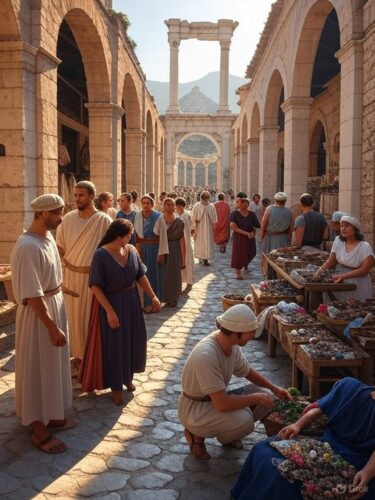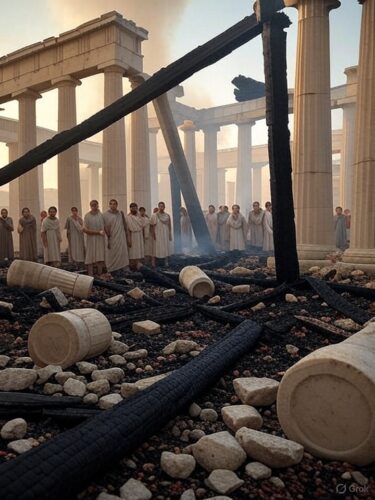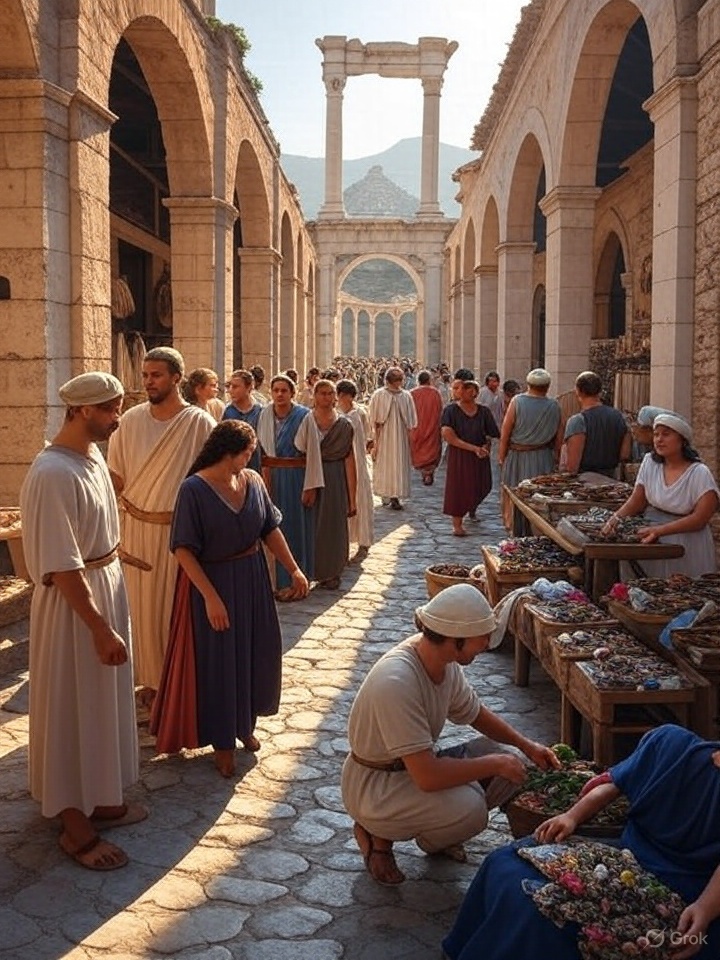On July 21, 356 BC, a single act of arson changed the course of history. A man named Herostratus set fire to the Temple of Artemis in Ephesus, one of the Seven Wonders of the Ancient World, reducing its grandeur to ash and rubble. This wasn’t just the destruction of a building—it was the loss of a cultural icon, a religious sanctuary, and a testament to human ingenuity. Yet, from the flames emerged a story of resilience, rebuilding, and enduring lessons that echo through the centuries.
In this blog, we’ll dive deep into the history of this magnificent temple, explore the dramatic events of its destruction, and uncover what it teaches us about legacy, ambition, and preservation. More than just a history lesson, this is a call to action—a chance to apply the wisdom of the past to your life today. Get ready for an epic journey through time that’s as informative as it is inspiring, with a plan to turn historical insights into personal empowerment. Let’s ignite the spark of the Temple of Artemis and see how its legacy can light up our modern world!

### The Temple of Artemis: A Wonder of the Ancient World
Imagine a structure so grand it drew visitors from across the known world, a temple so awe-inspiring it earned a spot among the Seven Wonders of the Ancient World. That was the Temple of Artemis, located in Ephesus, a bustling city in what is now modern-day Turkey. Dedicated to Artemis, the Greek goddess of the hunt, wilderness, and childbirth, this wasn’t just a place of worship—it was a symbol of power, artistry, and devotion.
Construction began around 560 BC, spearheaded by the architect Chersiphron and his son Metagenes. The project was funded by Croesus, the fabulously wealthy king of Lydia, whose name still echoes as a byword for riches. The temple they built was colossal: 115 meters long, 55 meters wide, and supported by 127 marble columns, each soaring 18 meters high. These weren’t plain pillars—many were adorned with carvings, friezes, and sculptures crafted by some of the finest artists of the age, including Phidias and Scopas.
The temple’s location added to its mystique. It stood on a site where a meteorite was said to have crashed, a celestial event interpreted as a divine endorsement from Artemis herself. Inside, a wooden statue of the goddess, draped in jewels and gold, presided over the sanctuary, rumored to possess magical powers. Pilgrims flocked to Ephesus, bringing offerings and boosting the city’s economy. Merchants sold miniature replicas of the temple, priests conducted elaborate rituals, and the air buzzed with the energy of devotion and commerce.
But the temple wasn’t static. It had already faced destruction once before—by floods in the 7th century BC—only to be rebuilt with even greater splendor. By 356 BC, it stood as a pinnacle of human achievement, a testament to what people could create when art, faith, and ambition aligned.

### The Night the Flames Rose
Then came July 21, 356 BC—a date that would live in infamy. On that night, a man named Herostratus crept into the temple with a torch and a twisted dream. His goal? To etch his name into history by destroying something eternal. As the wooden roof beams caught fire, flames devoured the temple’s interior, sending plumes of smoke into the night sky. The marble columns cracked under the heat, and the sacred statue of Artemis was reduced to charred remnants. By morning, the pride of Ephesus lay in ruins.
Who was Herostratus? We know little about him beyond his act. Some say he was a nobody—a shepherd or a laborer—driven by a desperate craving for recognition. Others suggest he was a madman, unhinged by envy of the temple’s glory. Whatever his motives, his plan worked in the cruelest way. Captured and tortured, he confessed under duress, admitting he’d burned the temple to ensure his name would be remembered. The Ephesians tried to thwart him: they executed him and banned anyone from speaking his name, hoping to erase him from memory. Yet, here we are, over two millennia later, still saying it—proof that infamy can outlast oblivion.
The destruction sent shockwaves through Ephesus. Priests mourned the loss of their sanctuary, artisans wept for their ruined masterpieces, and citizens grappled with the void left behind. Legend has it that the fire coincided with the birth of Alexander the Great, prompting a tale that Artemis was too busy overseeing his arrival to protect her temple. True or not, the story reflects the event’s seismic impact—it was a moment that demanded explanation.
But the Ephesians didn’t surrender to despair. They rallied, pooling resources and talent to rebuild. The new temple, completed decades later, was even grander, with taller columns and finer details. It stood for centuries, a phoenix risen from the ashes, until the Goths sacked it in 262 AD. Today, only a single column and scattered stones remain, a quiet echo of its former glory.

### Lessons Carved in Stone and Ash
The fall of the Temple of Artemis isn’t just a dusty page in a history book—it’s a treasure trove of lessons for us today. Let’s unearth three big ones.
First, it’s a wake-up call about preserving our cultural heritage. This temple wasn’t just bricks and mortar; it was a living archive of art, religion, and identity. Its loss reminds us how fragile these treasures are—whether it’s an ancient ruin or a local landmark, they’re ours to protect. Second, it’s a stark warning against the dark side of ambition. Herostratus didn’t build anything; he destroyed to be remembered. His story asks us: what kind of mark do we want to leave? Finally, it’s a testament to resilience. The Ephesians didn’t let one disaster define them—they rebuilt, proving that even after the worst setbacks, we can rise again.
These aren’t abstract ideas—they’re blueprints for living better, smarter, and with purpose. History isn’t just about what happened; it’s about what we do with it.

### Your Plan to Live the Legacy
So, how do you take this ancient tale and make it work for you today? Here’s a practical, punchy plan to channel the Temple of Artemis into your life. These aren’t vague suggestions—they’re specific steps to turn history into action.
– **Fund the Future**: Donate to a preservation cause—$10 to a museum, $50 to a historical site’s upkeep, or even $5 to a crowdfunding campaign for restoring an artifact. Every dollar keeps history alive. Pick a cause that sparks your curiosity, like saving Roman ruins or digitizing ancient manuscripts.
– **Get Your Hands Dirty**: Volunteer once a month at a local historical site, museum, or cultural event. Help clean artifacts, guide tours, or join an archaeological dig if you can swing it. Your time is a brick in the wall of preservation—check out sites like volunteermatch.org for opportunities.
– **Crack Open the Past**: Spend 30 minutes a week learning something new about history—watch a documentary on ancient Greece, read a chapter on the Seven Wonders, or take a free online course from platforms like Coursera. Then, share one cool fact with a friend or on social media to spread the love.
– **Think Before You Act**: Pause for 10 seconds before big decisions—ask, “Will this hurt or help the world around me?” Recycle that bottle, skip that shortcut through a heritage site, or pitch in on a community clean-up. Small choices build a legacy of care.
– **Aim High, Not Low**: Set a goal to be known for something positive—mentor a kid, start a blog about your passion, or create art that lifts people up. Dedicate an hour a week to it. Fame’s fleeting, but impact lasts—be the builder, not the burner.
This isn’t about rewriting history—it’s about rewriting your story with its wisdom. Start small, but start now.
—
### Rise from the Ruins
The Temple of Artemis burned, but its embers still glow with meaning. It tells us to guard what’s precious, to chase glory through creation, not destruction, and to rebuild when life knocks us down. You don’t need a torch or a temple to make your mark—just the guts to learn from the past and act on it today.
So, grab one piece of this plan and run with it. Donate a dollar, volunteer an hour, or share a story—because every step you take keeps the flame of history burning bright. The Ephesians rebuilt a wonder; you can build a life that’s just as remarkable. Let’s make legacies worth remembering.


